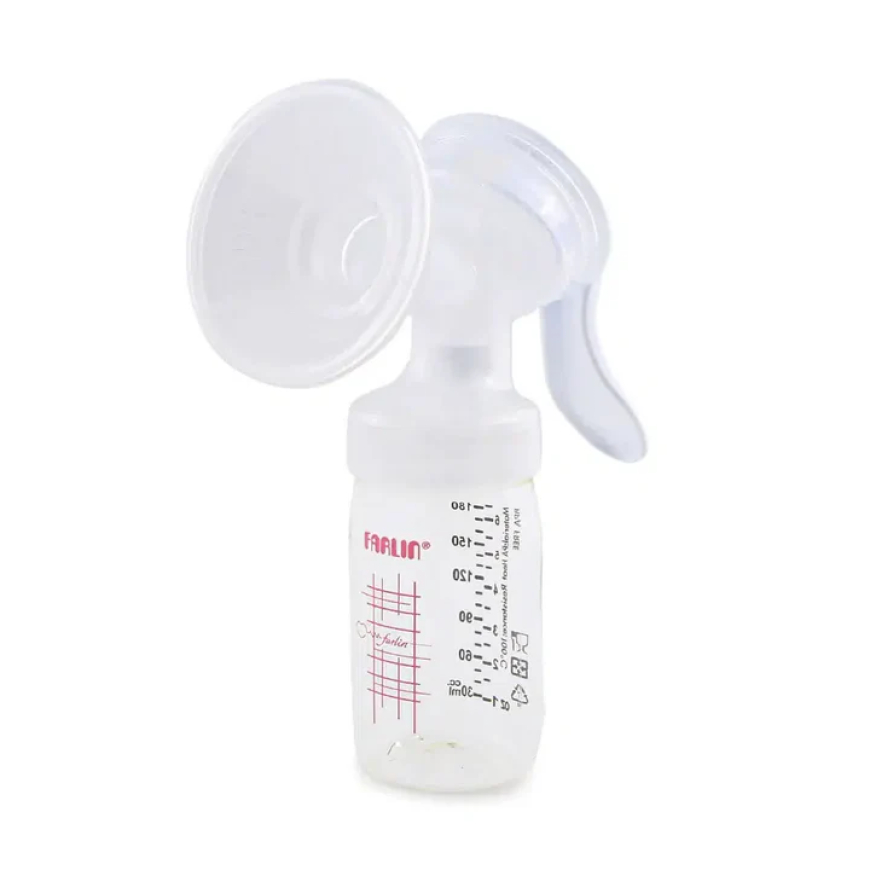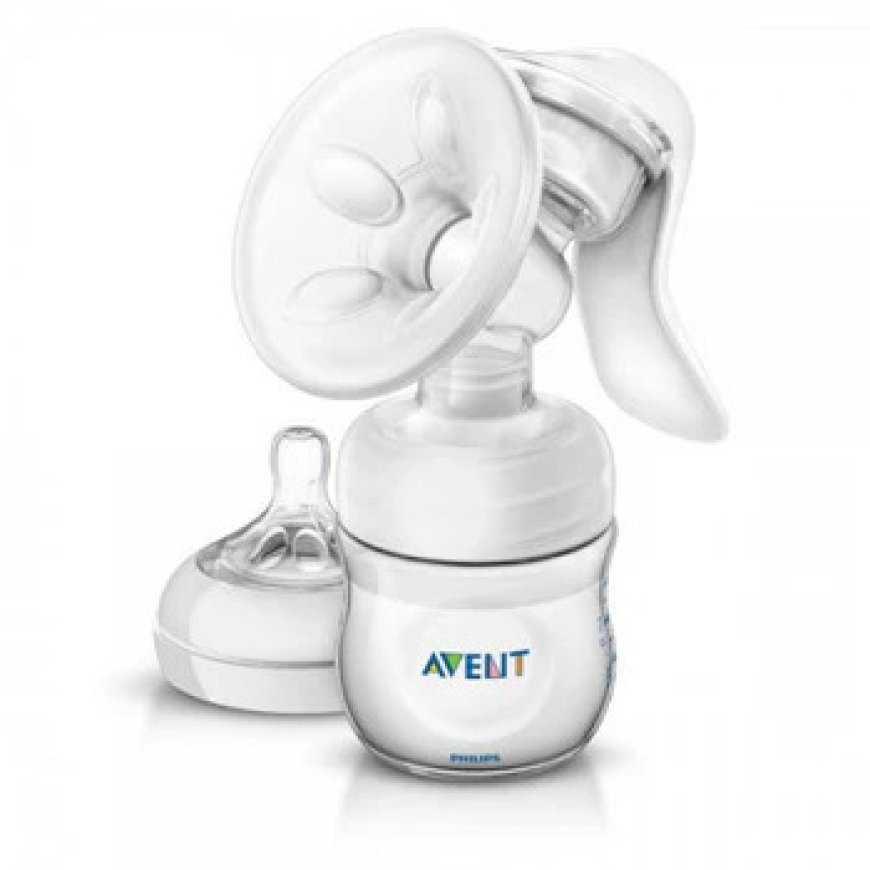The Ultimate Guide to Breast Pumps for Baby
Breastfeeding is a beautiful and natural way to nourish your baby but it isn’t always possible for every parent to be present for every feeding.

Breastfeeding is a beautiful and natural way to nourish your baby but it isn’t always possible for every parent to be present for every feeding. This is where breast pumps come in handy offering a convenient solution for mothers to express milk and ensure their babies get the best nutrition even when they're not around. Whether you're a new mom exploring your options or a seasoned parent looking for tips this comprehensive guide will walk you through everything you need to know about breast pumps.
Breastfeeding is often described as one of the most intimate and fulfilling experiences between a mother and her baby. However there are times when direct breastfeeding isn’t possible. Maybe you're returning to work dealing with latching issues or simply need a break. This is where breast pumps come into play. They offer flexibility and freedom allowing you to provide your baby with the benefits of breast milk even when you can't be there in person.
In this article we’ll dive deep into the world of breast pumps exploring the different types available how to choose the right one tips for successful pumping and much more. By the end you'll have a clear understanding of how to make the best choice for you and your baby.
Types of Breast Pumps
Choosing the right breast pump can feel overwhelming with so many options available. To make an informed decision it’s important to understand the different types of breast pumps and how they work.
Manual Breast Pumps
Manual breast pumps are operated by hand and are usually more affordable than their electric counterparts. They are lightweight portable and quiet making them ideal for occasional use or travel. However they require more effort and can be tiring if used frequently.
Electric Breast Pumps
Electric breast pumps are powered by electricity or batteries and can be single or double (expressing milk from one or both breasts simultaneously). They are efficient and ideal for regular use especially for working mothers. Electric pumps often come with adjustable suction levels making the process more comfortable.
Wearable Breast Pumps
Wearable breast pumps are a newer innovation designed to fit inside your bra for discreet and hands-free pumping. These pumps offer the ultimate convenience allowing you to pump while going about your daily activities. They are typically battery-operated and come with various settings to mimic a baby’s natural sucking rhythm.
Choosing the Right Breast Pump
Selecting the right breast pump depends on your individual needs and lifestyle. Here are some factors to consider:
- Frequency of Use: How often will you be pumping? If it’s only occasionally a manual pump might suffice. For regular use an electric or wearable pump is more suitable.
- Portability: Do you need a pump that’s easy to carry around? Manual and wearable pumps are more portable compared to larger electric models.
- Comfort: Look for pumps with adjustable suction levels and comfortable breast shields.
- Budget: Breast pumps range from affordable to quite expensive. Determine your budget and find a pump that offers the best value for your money.

How to Use a Breast Pump
Using a breast pump can be straightforward once you get the hang of it. Here’s a basic step-by-step guide:
- Read the Instructions: Every pump is different. Start by reading the manufacturer’s instructions.
- Wash Your Hands: Always wash your hands before handling your pump or expressing milk.
- Assemble the Pump: Ensure all parts are clean and assemble the pump according to the instructions.
- Find a Comfortable Spot: Sit in a comfortable chair with back support.
- Position the Breast Shields: Place the breast shields over your nipples ensuring a good seal.
- Start Pumping: For electric pumps turn on the device and adjust the settings. For manual pumps start pumping the handle to create suction.
- Store the Milk: Once you’re done carefully remove the breast shields and transfer the milk to storage containers.
Cleaning and Maintenance
Keeping your breast pump clean is crucial for your baby’s health. Here’s how to do it:
- Disassemble the Pump: After each use disassemble all parts that come into contact with breast milk.
- Rinse with Cold Water: Rinse each part with cold water to remove milk residue.
- Wash with Warm Soapy Water: Use warm soapy water to clean all parts thoroughly.
- Sterilize: Sterilize the parts at least once a day by boiling them for 10 minutes or using a steam sterilizer.
- Air Dry: Let all parts air dry completely before reassembling the pump.
Breast Pump Accessories
Several accessories can enhance your pumping experience. Some of the most useful include:
- Breast Milk Storage Bags: These are essential for storing expressed milk safely.
- Nursing Bras: Specialized bras that hold the pump in place for hands-free pumping.
- Pump Cleaning Wipes: Handy for cleaning pump parts when you’re on the go.
- Extra Breast Shields: Having a spare set can be a lifesaver if you’re pumping frequently.
- Cooling Packs: These help keep your milk cool if you’re pumping away from home.
Storing Breast Milk
Proper storage of breast milk ensures that your baby receives all the nutritional benefits. Here are some guidelines:
- Storage Containers: Use BPA-free plastic bottles or breast milk storage bags.
- Labeling: Always label the container with the date and time of expression.
- Refrigeration: Store milk in the refrigerator for up to 4 days.
- Freezing: For longer storage freeze the milk. It can be kept in a freezer compartment inside a refrigerator for up to 6 months and in a deep freezer for up to 12 months.
- Thawing: Thaw frozen milk in the refrigerator overnight or by placing the container in warm water. Never refreeze thawed milk.
Tips for Pumping Success
Pumping breast milk can be challenging but these tips can help make the process smoother:
- Stay Hydrated: Drink plenty of water to maintain your milk supply.
- Relax: Stress can affect milk production. Try to relax and think about your baby while pumping.
- Massage Your Breasts: Gently massaging your breasts before and during pumping can help stimulate milk flow.
- Pump Regularly: Consistency is key. Try to pump at the same times each day.
- Store Extra Parts: Keep extra pump parts at work or in your bag to avoid any disruptions.
Traveling with a Breast Pump
Traveling with a breast pump requires some planning. Here’s what you need to know:
- Portable Pumps: Choose a lightweight portable pump that’s easy to carry.
- Power Source: If you’re traveling internationally check the voltage and bring appropriate adapters.
- Storage Solutions: Use insulated cooler bags with ice packs to keep your milk fresh.
- Privacy: Look for lactation rooms or private spaces at airports and train stations.
Benefits of Breast Pumping
Using a breast pump offers numerous benefits:
- Flexibility: Allows you to feed your baby even when you’re not around.
- Milk Supply Maintenance: Helps maintain and increase milk supply.
- Shared Feeding: Partners or other caregivers can help with feedings giving you a break.
- Special Situations: Useful for babies who have difficulty latching or mothers with medical conditions.
Conclusion
Breast pumps are an invaluable tool for many parents offering the flexibility to provide your baby with the best nutrition possible. Whether you choose a manual electric or wearable pump understanding your options and how to use them effectively can make a significant difference in your breastfeeding journey.
Remember every mother’s situation is unique and what works for one may not work for another. Take the time to find the right pump for you and enjoy the bonding experience that comes with feeding your baby. Additionally explore a wide range of online baby products at MamaLove ensuring you have everything you need for your little one.












